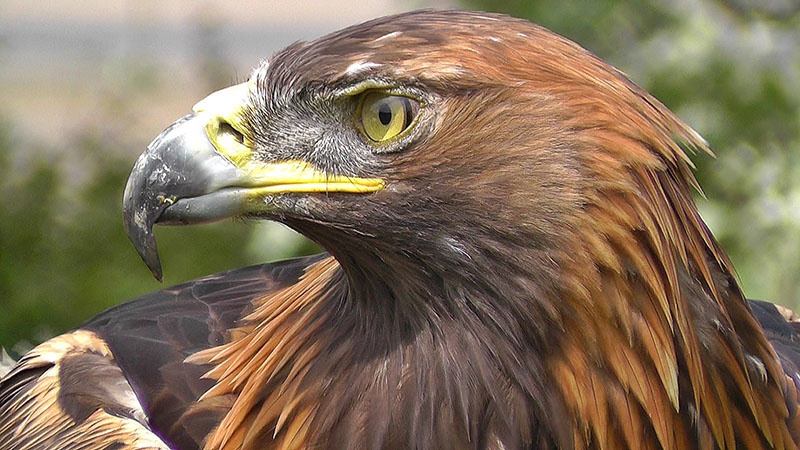Iran’s rare animal and plant species (16)
One of the birds which have been included among the endangered species by the International Union for Conservation of Nature is Iran’s golden eagle, which lives in mountainous regions and is the undisputed ruler of high altitudes. Today, we discuss this bird of prey.
Golden eagle is enlisted among large eagles. It has earned its name due to the pale brown color of its feathers. Its length stretches up to 76 to 96 centimeters, and it looks gigantic while flying. In fact, the distance between the two rear-ends of its wings stands at 1.8 meters to 2.3 meters. Its muscular red chest and its long wings which reserve a significant volume of fat and blood make it possible for the golden eagle to continuously fly at a fast speed.
Golden eagles usually fly at the speed of 50 kilometers per hour. However, upon spotting its prey, golden eagles accelerate their speed to 160 kilometers per hour in a blink of an eye, while later diving to catch their prey. Golden eagles can fly continuously for several hours and therefore it is necessary for this bird of prey to reserve its energy. The form of their wings and bodies, and warm air currents make it feasible for this bird of prey to fly for a number of hours.
Golden eagles’ mating seasons is around late winter and early spring. Upon mating, the male and female eagles cooperate to build their nests over rocks at high altitudes with the usage of a number of wooden pieces, while later covering the surface of their nests with soft plants. Meanwhile, the male and female eagles build more than one nest within their vast territory and settle in every one of them at times. However, as of February till April, in which the female golden eagles lay their eggs; the safest and most comfortable nest is chosen by them. Golden eagles usually lay two eggs; with their offspring coming out of their eggs within 43-45 days.
Upon the birth of offspring, the male adult golden eagle feeds them in the first few weeks. The offspring gain the ability to fly within 72-84 days after their birth, and can accompany the adult golden eagles in their hunting within 32-80 days after learning how to fly. Thereafter, the offspring experience an independent life.
Golden eagles usually feed on small mammals such as rabbits and squirrels. But, they also like to eat different types of mice, turtles, snakes, alligators, lambs, and foxes. The male and female golden eagles respectively weigh up to 5 and 5.6 kilograms. They can lift baits of a similar weight, to carry their prey to their nests at high altitudes. Meanwhile, golden eagles also feed on turtles, throwing them off rocks in order to kill and later eat turtles.
Residence at high altitudes and flight at high speed has not left any enemies for the golden eagles within the nature. Mankind is their only enemy. Human activities have posed many threats against the lives of golden eagles. On several occasions, golden eagles have died due to eating small mammals, which had been contaminated with toxic chemicals. Some other golden eagles have died upon getting caught between electricity cables and electrocution. Moreover, construction of roads in mountainous regions has led to destruction of their nests.
All and all, these threats have led to a fall in the number of golden eagles, pushing them toward the verge of extinction in Iran. Meanwhile, a fall in the numbers of this bird of prey distorts the food chain and leaves a direct negative impact on the regional ecosystem. The paramount importance of golden eagles has been recognized worldwide, prompting the International Union for Conservation of Nature to place golden eagles in its red list of endangered species. Thus, plans should be adopted for protection of this bird of prey and its habitats by the national and international organizations, in order to secure the survival of golden eagles.
MR/SS



